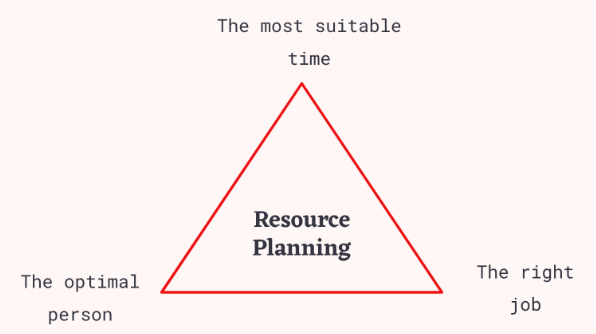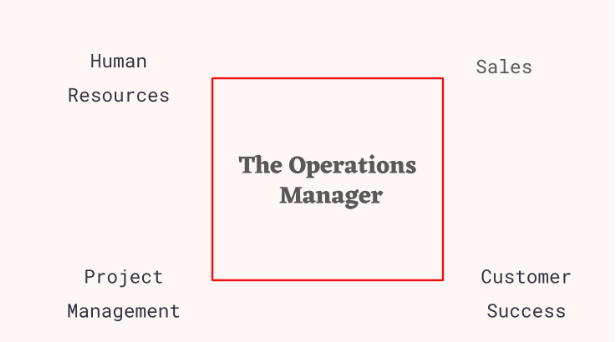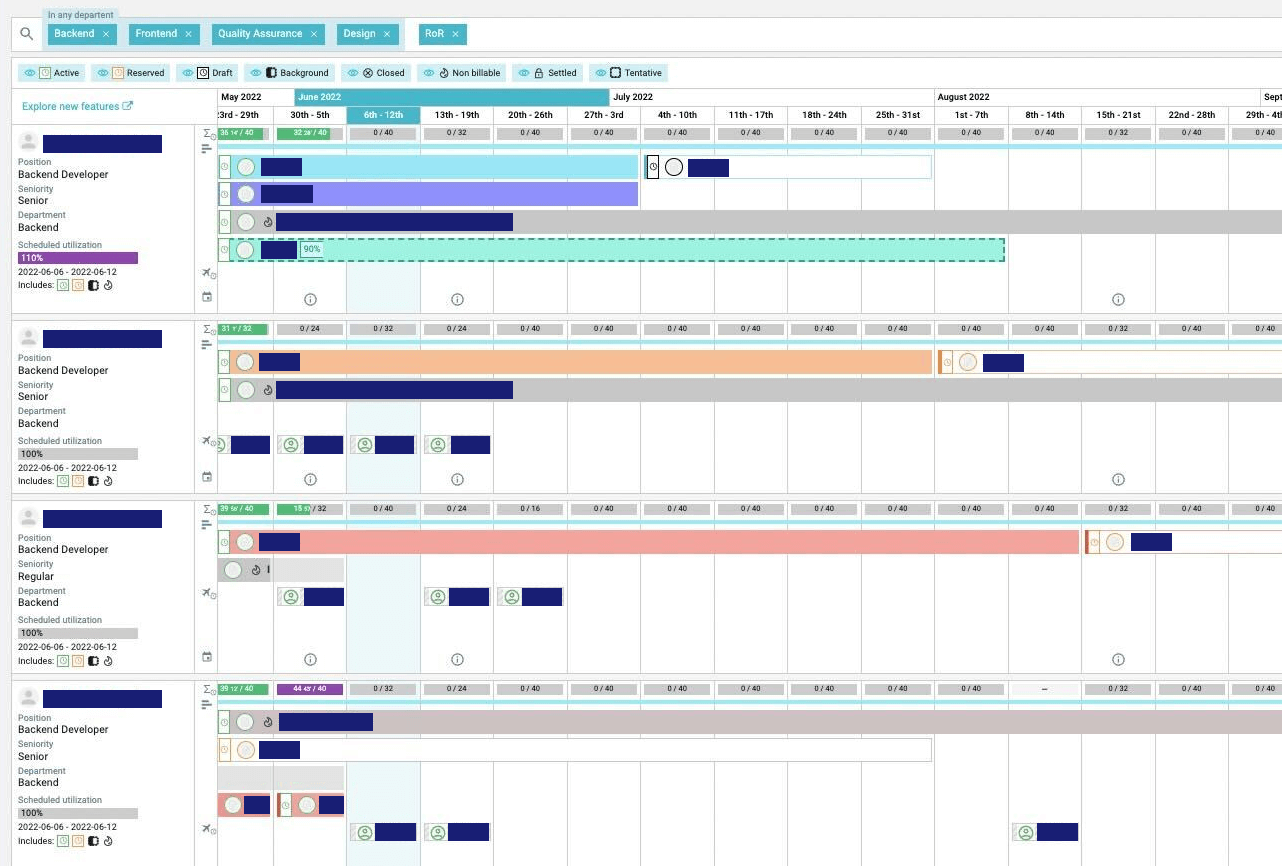The New Default. Your hub for building smart, fast, and sustainable AI software
Table of Contents
The Agile mindset is all about responding to changes: minimize risk, deliver fast, repeat. But a business cannot thrive on reacting only - it needs a reliable plan that reminds everyone where North is. How can a software development web agency solve this contradiction and ensure low risk to current and new partners? At Monterail, we combine the best of both worlds with what we call Agile Resource Planning.
What is Resource Planning?
Resource Planning is the process of allocating resources to projects based on their availability, skillset, individual abilities, and preferences. In a nutshell, its goal is to find the optimal person for the right job at the best time possible. As planning is a bit more complex than a simple puzzle, we need to consider a few more factors, such as other projects, the client’s feedback and ultimately the optimal timeline. Resource Planning is strategic to the whole organization on many levels.
Structured and well-planned allocation of resources is crucial to making work smooth, eliminating blockers, and starting projects as soon as possible.

Why Do We (And You) Need Resource Planning?
Imagine a software development company with 170 people on board and over 100 in the production team handling around 40 projects at the same time (here’s the hint - Monterail). How to ensure all projects have relevant and skilled developers and designers? All while being ready to accommodate exciting new requests that might demand different sets of skills?
For example, managing people that divide their time across different projects is a challenge - and they work within the Agile and non-Agile frameworks which makes it even harder. At the same time, support and business-as-usual activities happen alongside project work and specialized resources may be shared among teams. To keep the company going (and profitable!) and to answer the needs of clients, Resource Planning is essential.
Resource Planning - The Monterail Way
Depending on the organization, Resource Planning can be tackled by the whole team or a dedicated person like the Operations Manager. Her job is to keep an eye on the team’s utilization to ensure people don’t have too much slack time or are overwhelmed with the workload, and feel bored. Also, the Operations Manager takes care of the client-side - making everything in their power to kick off the project quickly and efficiently. The Operations Manager brings together Human Resources (HR), Project Management (PM), Customer Success, and Sales departments to coordinate team allocations.

The Operations Manager also aims to find answers to the most burning questions as soon as possible:
- How many new projects could we potentially start next month?
- How many new people should we hire to work on them and what sort of experience should they have?
- Who will fit this project the best?
- If we don't have new projects, how can we leverage our current resources?
- What if we have the perfect project for us, but we don't have enough people to work on it?
Resource Planning Step by Step
The Operations Team at Monterail gets involved at the very beginning of the sales process as each new project requires additional resources. Once business analysts prepare a project estimation, Operations take it over for analysis and choose team members considering their skills, seniority, and other project requirements. Based on these recommendations, the sales team prepares the first draft of the project’s budget which goes to the client. Here’s a part of the project specification:
| Professional | Rate | Hours | Estimated Cost |
| Senior Backend developer | x € | 40 | y € |
| Regular Frontend developer | x € | 100 | y € |
| Junior Backend developer | x € | 20 | y € |
Specs or requirements changed during our first talks? That’s ok.
Our process allows us to quickly adapt our estimation so we always know who will be available and when.
After the approval, we sign the contract and get down to the details of the project plan and apply necessary changes. In this stage we match the needs of the client with a particular person in the team, e.g. senior Vue developer - Łukasz (full time), junior QA - Kasia (half time), Project Manager - Tomasz, etc.
What makes the process easier and ensures people are well-matched is the involvement of a Solution Architect. They know everything about everyone and are able to recommend optimal people for each project's challenges.
How Do We Make it Work?
Unique organization skills of Monterail specialists, involvement of various team members, and good knowledge of the team are key ingredients to effective Resource Planning. We also hand-picked a specialized resource planning software to help make resource scheduling faster and easier.
At Monterail, we use Primetric which answers our company’s complex planning needs and addresses exceptions through feature customization. Options like a calendar divided into people and projects allow us to have constant control over workload and help quickly apply changes. The soft booking option makes choosing the best person for a specific project faster and risk-free. Reports and vacancy reporting provide help in matching people with projects they specialize in using historical data for discovery patterns and foreseeing needs for specialists in the future
 Sneak peek of a Primetric calendar. We have up-to-date overall information about the availability of particular specialists over specific periods of time and the number of hours for which these experts have been scheduled for projects under development.
Sneak peek of a Primetric calendar. We have up-to-date overall information about the availability of particular specialists over specific periods of time and the number of hours for which these experts have been scheduled for projects under development.
Benefits of Resource Planning For Projects
Resource Planning plays a key role in a project’s success. Here’s a list of what you gain directly and indirectly from working with a partner with professional resource allocation:
- You don’t need to wait for ages to kick off your project. We can start a new project quickly and finish it quickly when needed.
- We can rotate someone easily to a different project if, for example, your project roadmap changes and the priorities are shifting.
- You don’t need to worry about the team structure. You let us know what skills you need for your project and can be sure to receive cherry-picked people who have them.
- We ensure the availability of as many seniors as possible.
FAQ - 8 Common Clients Questions About Resource Planning
Over the years, we have found that some queries and concerns repeat very often. By keeping our planning skills super sharp, answering them has become very straightforward.
Here are the answers to What If?... questions, written with the help of our Operations Manager, Alexandra Ardelean.
1. I want to add a developer to my project?
We can make it happen. First, we clarify the details of the request, such as how time-sensitive it is and what skills and level of experience the developer should have. Then, we check internally who might be a good fit to present suggestions to our partner. It’s important to review the options swiftly, because our availability might change. It’s a bit like booking a vacation: you can make a reservation, but taking too long to decide might change the available options.
2. I want to decrease the budget?
Budget is one of the key factors we consider when planning a project, so it’s always good for us to be on top of the financial plans of our partners. By knowing about the budget risks of our partners, our team can suggest different strategies for decreasing the budget. For example, we may narrow the scope and keep the deadline sharp or downscale the team and keep the backlog intact.
3. I want to extend someone’s time from half-time to full-time?
Sometimes our partners tell us they feel a developer might perform better if they dedicate more time to a project, or that a developer is spending too much time and therefore burning their budget too fast. We always encourage our partners to flag this to the PM. Since the Project Managers are always in close touch with the Ops team, we are able to prepare a tailored solution within a couple of days.
4. I have a very limited budget from the get-go?
That probably means the project will have a smaller scope, like an MVP or even a POC. But the quality of communication and commitment to deliverables never take a hit. No matter the size of the deliverable, Resource Planning ensures teams are staffed according to the project expectations in terms of deadline and budget.
5. I want to change one or more members of the team?
It’s possible, but, similar to scaling up the team, we ask for details to understand the context of this change. For example, the partner might be looking for different skills or aiming to achieve something specific. By understanding the reasoning behind the request, we can optimize planning and synchronizing calendars and knowledge transfers.
6. Do we really need a PM in the project? I feel like it’s not necessary.
PMs in Monterail are there to make sure that every step of the project goes smoothly: from checking whether the Developers time is properly tracked to making sure that the team composition is adjusted to your planned budget and to the velocity needed to reach your deadlines. That being said, the involvement of the PM in the project changes naturally, and might decrease over time. From the Resource Planning perspective, we plan the PMs’ time the same way as we plan the involvement of Frontend, Backend, Designers and Testers - so we look carefully at the details of the project needs. You can read about how our PM Team Lead sees the future of Project Management.
7. How can I be sure my project will always be taken care of?
We keep track of all teams' engagements and availability. We have a look at developers in ongoing projects where a rotation may happen smoothly. This also became a great driver for company-wide rotations, making this process transparent and easier to implement. And when new projects come, we are always prepared for them and have the exact right team to start them without making ad-hoc rotation decisions and without influencing existing projects.
8. I’d like only senior developers - is it possible?
In theory yes, but in practice that is rarely necessary or even productive. A team with mixed seniorities can more easily strike the balance between high-level planning and straight-up implementation. Good Resource Planning allows team compositions based on what will solve the project challenges. Keep a close communication with your AM and make sure to tell them if you notice stuff that can be improved in the delivery flow.
:quality(90))
:quality(90))

:quality(90))
:quality(90))
:quality(90))